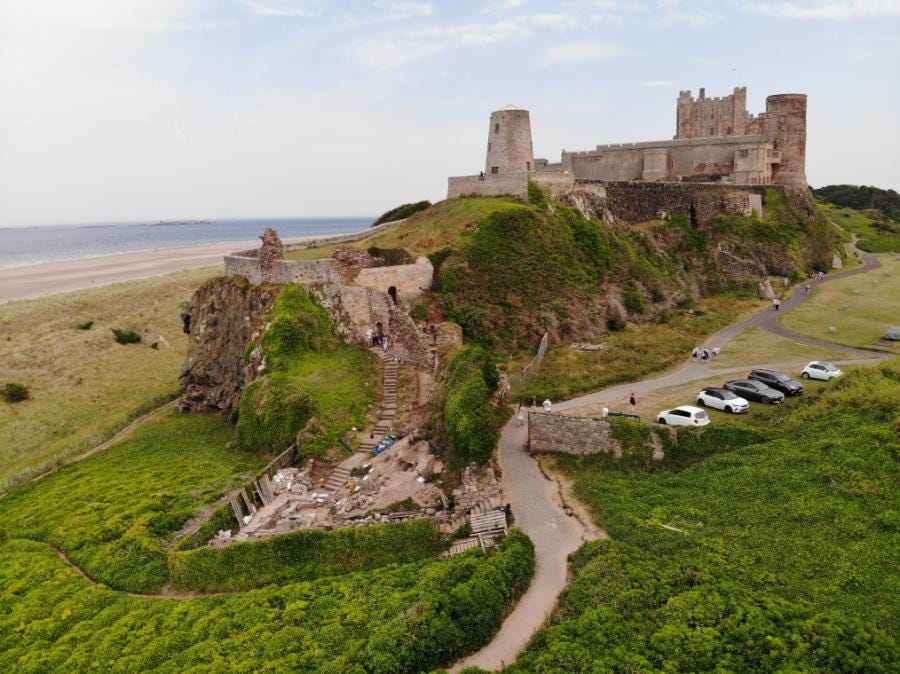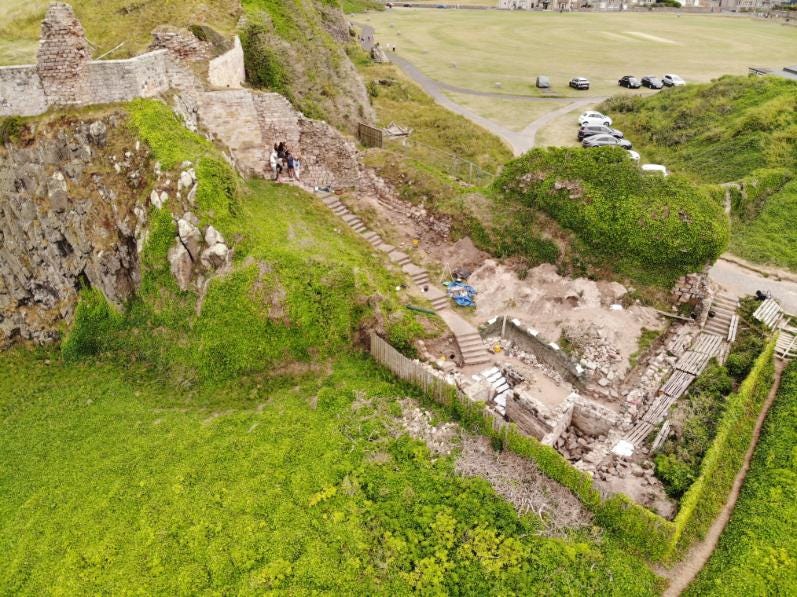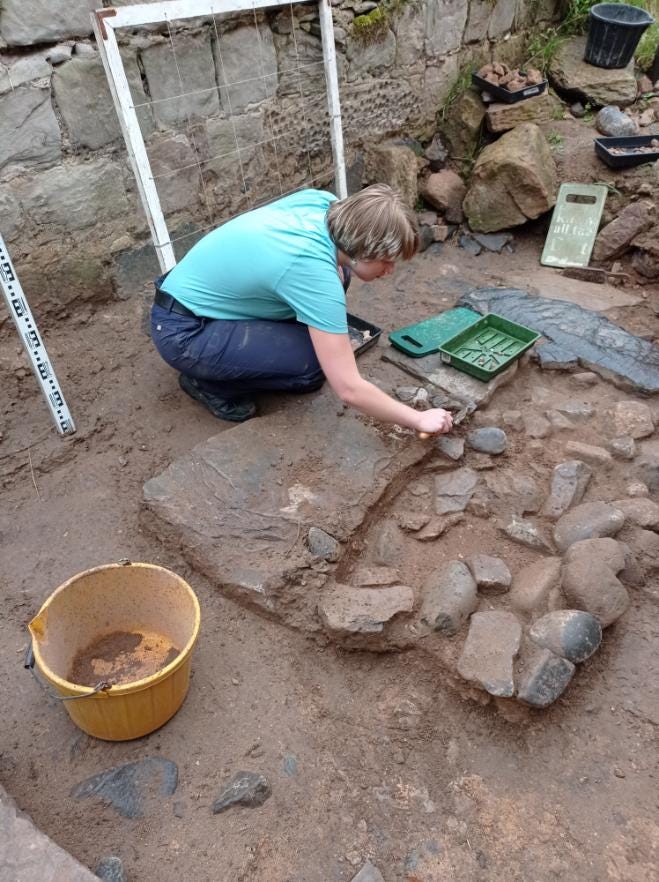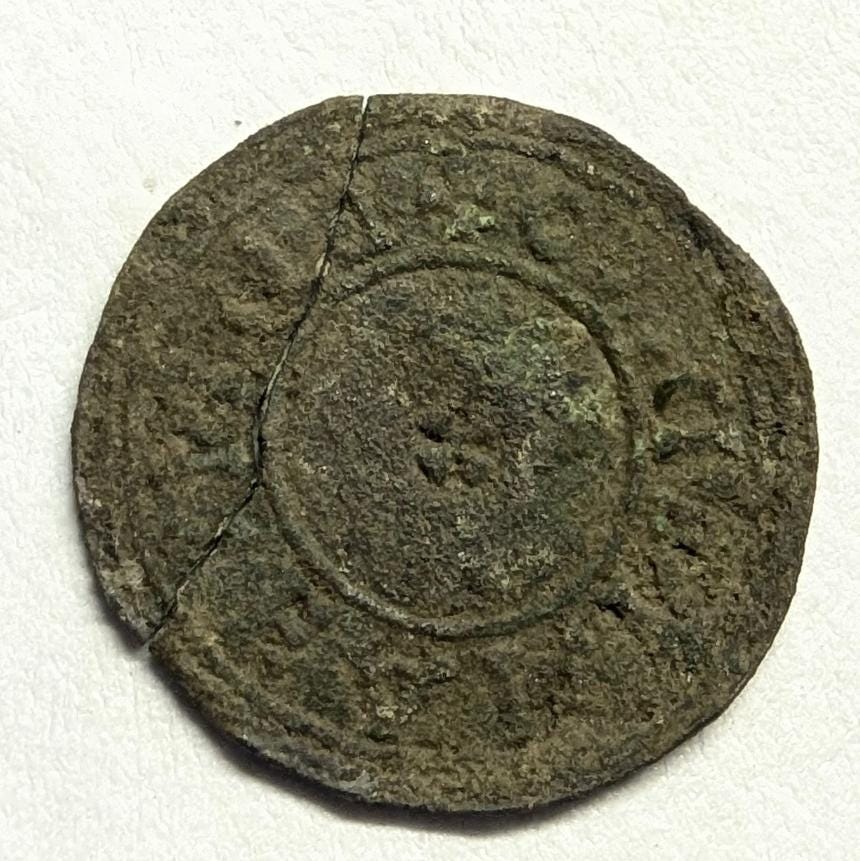Silver penny find excites castle dig team
Bamburgh Castle dig is on the money, as Tony Henderson reports
A penny for your thoughts goes the old saying.
And as the latest in a series of annual digs is due to start at Bamburgh Castle, the thoughts of archaeologists will be turning to an early to mid 10th century silver penny – one of the finds from the excavations to explore the fortification’s St Oswald’s Gate and the Tower of Elmund’s Well.
The digs by the Bamburgh Research Project (BRP), an independent, non-profit archaeological body, is investigating the castle, which it describes as “one of the most important archaeological sites currently under excavation in northern England.
“Since 1996 we have been working to uncover the history of this fascinating castle and its environs, from prehistory to the present day.”
The new season starts on Sunday (June 29) and will run for three weeks.
The discovery of the coin while excavating outside of the tower on the seaward side of the defences was described by BRP director Graeme Young as “extremely exciting.”
One possibility is that the penny was an illegally-made coin produced beyond official mints which were concentrated in the south of England at a time when such practices could be harshly punished.
It may have been worth the risk – some scholars believe that a thousand years ago the penny would have been roughly equal to £10 or even £20 today.
Records say that a sheep was usually five pennies and a cow 20 pennies.
Graeme said: “We very much struggled to make any sense of the inscription on it as it hardly even seemed to be formed from actual letters.
“The lack of a proper inscription suggested an irregular coin – that is a forgery or product of a moneyer outside of the normal regulation. Within the regulated and controlled group of royal moneyers very strict rules were applied to the quality of coinage, with extremely brutal punishments for striking bad coin.
“A medieval coin specialist noted that what little could be discerned of the inscription on our coin suggests the coin is irregular. Irregular coins could be forgeries or even be the work of an illiterate moneyer or someone outside the usual networks, because the inscriptions don’t make sense.”
Another theory is that as the north of England was so far removed from the southern mints, coin shortages could mean that irregular production may have been tolerated by regional nobles.
The new dig will continue work which has revealed the stairs down into the well room at the base of the tower and the well itself.
It is thought that the well may have served the small port that once lay to its immediate north. Replenishing water would have been important for a functioning harbour.
The defensive outworks were likely built to enclose this and control not just the port but the access to water.
Another find has been the remains of a cast iron 19th century water pump, probably from when the well was still a source of water for those living in a cottage built into the tower.
Two cannon balls were also found of different sizes.
Following the upcoming dig, the BRP is also running a post-excavations taster week from September 22–26.
This will use the BRP’s extensive archive, which consists of material from the prehistoric to the medieval periods, as the basis for an introduction to the different post-excavation techniques and research.
Details from www.bamburghresearchproject.co.uk






